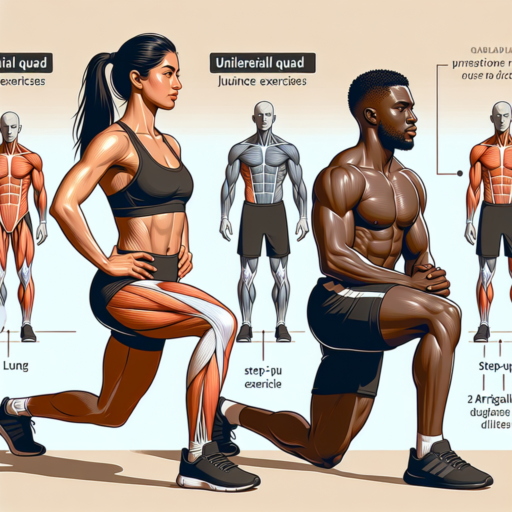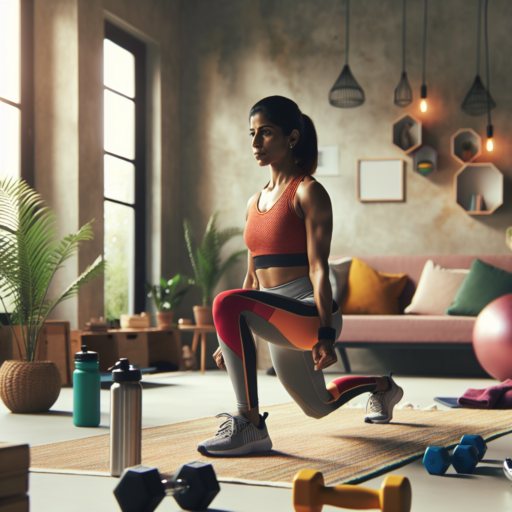What is a unilateral exercise for the lower body?
Unilateral exercises for the lower body refer to movements and exercises that focus on using one leg or one side of the lower body at a time. Unlike bilateral exercises, which engage both sides equally, unilateral exercises emphasize isolating and strengthening each leg individually. This approach helps in improving muscle imbalances, enhancing coordination, and increasing muscle strength and stability on each side of the body. Commonly incorporated into fitness routines, these exercises are crucial for athletes, rehabilitation, and anyone looking to achieve balanced lower body strength and mobility.
Benefits of unilateral lower body exercises include the targeted strengthening of muscles, improved balance and coordination, and enhanced athletic performance. These exercises also play a significant role in injury prevention and rehabilitation by focusing on the stabilization of the knee and hip joints. By working one side of the lower body at a time, individuals can address and correct muscle imbalances that bilateral exercises might overlook, leading to a more symmetrical and functional muscular development.
Examples of unilateral exercises for the lower body range from simple movements to more complex ones designed to challenge stability and strength further. These exercises often include lunges, single-leg deadlifts, Bulgarian split squats, and step-ups. Each exercise targets different muscle groups within the lower body, such as the quadriceps, hamstrings, glutes, and calves, offering a comprehensive approach to unilateral training. Implementing these exercises into a workout routine can lead to significant improvements in lower body strength, balance, and overall physical performance.
What is the best single-leg exercise?
Identifying the best single-leg exercise can be somewhat subjective as it often hinges on individual goals, fitness levels, and physical conditions. However, one standout exercise frequently dominates discussions among fitness professionals—the Bulgarian Split Squat. This exercise is renowned for its ability to effectively target and strengthen the quadriceps, glutes, and hamstrings, while also engaging the core and lower back muscles for balance and stability.
Benefits of Bulgarian Split Squats
The Bulgarian Split Squat is celebrated for its versatility and the profound impact it has on unilateral strength, balance, and overall lower body development. By elevating the rear foot, it increases the exercise intensity, focusing more deeply on the engaged leg. This not only helps in correcting muscle imbalances but also improves flexibility, particularly in the hip flexors—a significant advantage for athletes and those looking to enhance their functional fitness.
How to Perform a Bulgarian Split Squat
Execution of this exercise requires attention to form to maximize its benefits and minimize injury risk. Start by standing a couple of feet in front of a bench or a sturdy elevated surface, facing away. Extend one leg back and rest the top of your foot on the bench. Lower your body by bending your front knee, keeping your torso upright and your front knee aligned with your ankle. Push through your front heel to return to the starting position, ensuring a smooth motion. The key to effectiveness lies in the controlled movement and focusing on the contraction of the muscles.
Incorporating the Bulgarian Split Squat into your fitness routine can significantly elevate your single-leg exercise game, making it a compelling contender for the best single-leg exercise. Its ability to target key lower body muscles, improve balance and flexibility, and its adaptability for different fitness levels, make it a valuable addition to any workout regimen.
Can you build muscle with unilateral exercises?
When it comes to enhancing your physique and building muscle, the efficacy of unilateral exercises often enters the conversation. Unlike traditional bilateral movements that work both sides of the body simultaneously, unilateral exercises focus on one limb at a time. This targeted approach can yield significant benefits for muscle growth, particularly in addressing imbalances and concentrating effort on specific muscle groups.
The beauty of unilateral exercises lies in their ability to isolate and work individual muscles more intensely. By doing so, they not only promote muscle hypertrophy but also ensure that both sides of the body develop equally. This is especially beneficial for those seeking to correct asymmetries and enhance muscular coordination. Moreover, unilateral training can improve functional strength, which is essential for daily activities and athletic performance.
Engaging in unilateral exercises such as lunges, single-arm presses, and single-leg deadlifts activates core muscles to a greater extent as the body works to maintain balance. This added core engagement further supports muscle building by stabilizing the spine and providing a solid foundation for lifting heavier weights. The additional focus on balance and core stability introduces a holistic approach to fitness, where muscle growth is accompanied by improvements in overall body strength and functionality.
No se han encontrado productos.
Are unilateral leg exercises necessary?
Many fitness enthusiasts and athletes often ponder the significance of including unilateral leg exercises in their workout routines. Unilateral exercises, which work one limb at a time, are not just a trend in the fitness world. They serve a critical purpose in developing balance, strength, and correcting asymmetries. Through these exercises, individuals can focus on one leg at a time, ensuring both legs develop equally and reducing the risk of overuse injuries.
Addressing Muscle Imbalance: One of the foremost reasons why unilateral leg exercises are deemed necessary is their ability to correct muscle imbalances. When performing bilateral exercises, it’s common for the stronger leg to compensate for the weaker, leading to uneven muscle development. Unilateral exercises, by allowing each leg to work independently, ensure that both legs exert equal effort, promoting balanced muscle growth and enhancing overall mobility.
Examples of Unilateral Leg Exercises
Including a variety of unilateral leg exercises in your workout routine can significantly improve your physical performance. Examples include lunges, single-leg deadlifts, and Bulgarian split squats. These exercises not only aid in strengthening each leg but also enhance coordination and stability, which are crucial for both daily activities and athletic performance.




